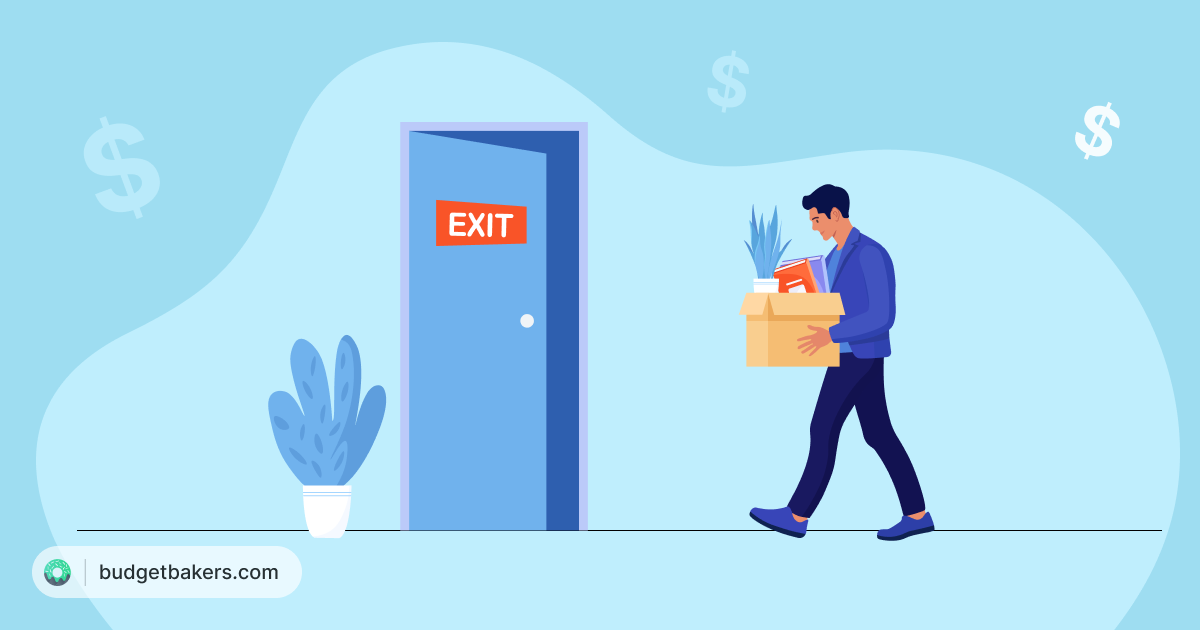Mastering personal finance demands more than just maintaining a budget. Once you’re saving more than you make, and you have a comfortable emergency fund, you’ll need to start thinking about how to maintain and grow your wealth. Even though inflation may now be under control, we’ve still seen a period of relatively high inflation, that left the salaries of most working people able to buy less than before. At the same time though, the world’s uber-rich got even richer. In case you’ve just come out from under a rock, this happened because financial markets made huge gains during the pandemic, and continue to grow faster even than inflation.
Financial markets are historically the best method of growing your personal wealth. And the good news is, it’s easy to get started. In this comprehensive guide, we’ll dive into financial markets, unraveling the mysteries of stocks, bonds, and the diverse realm that lies beyond.
[Disclaimer: the following contains promotional information on stock and bond tracking software offered by BudgetBakers. We do not deal in or trade stocks or bonds or other financial instruments.]
Overview of Financial Markets
Financial markets serve as platforms where buyers and sellers come together to trade various financial assets. These markets play a pivotal role in allocating resources efficiently, facilitating capital formation, and determining the prices of assets. Knowing what each of these markets is for will help you determine which is best for your needs.
Types of Financial Markets
- Capital Markets
Capital markets are where long-term securities, such as stocks and bonds, are traded. We’ll explore the role of capital markets in facilitating the transfer of capital from investors to businesses, and profits from businesses to investors, fostering economic growth.
- Money Markets
Money markets deal with short-term debt instruments and provide liquidity (available cash) for businesses and governments. Money markets are especially crucial in managing short-term funding needs, and they provide a way for investors to make a return on their money while also having access to their cash.
Stocks: Owning a Piece of the Company
Stocks are easily the most “exciting” part of the financial system, because unlike more passive forms of investing, they allow you to own a piece of a large publicly traded company. The stock market is typically what the news media will focus on; if only because each stock represents an actual enterprise that has a leadership, produces products and services, and is visibly involved in the world of popular culture and politics.
Basics of Stocks
Stocks represent a stake of ownership in a company, and entitle the shareholder to a portion of the company’s assets and profits. There are different types of stocks, such as common and preferred shares, and they differ in terms of ownership rights. Typically, the public can own common shares of a publicly traded company, meaning that they are the first to be wiped out by a loss or bankruptcy, and they are less entitled than preferred share types to voting on the company’s leadership. A company may or may not pay them a “dividend” or a share of the profits of the company on a quarterly basis.
P/E (Price to Earnings) Ratios
Every company has a particular amount of shares outstanding in the financial markets, and the total market price of those shares, in comparison with the company’s real earnings per year, is called the Price to Earnings Ratio or “P/E.” A company with a high P/E has expensive shares in comparison with what the company makes. For example, at one point in late 2020, the car manufacturer Tesla had a P/E ratio of over 1000, meaning that it would take 1000 years (at the amount Tesla was earning at that time) to justify its stock price. A company with a low P/E is making more in comparison with the price the market puts on the company. A company’s P/E can change drastically, either because the stock price falls, or because the company earns more. Today Tesla’s P/E is down to about 80, partly because the stock price fell from its all-time high, but also because its earnings increased.
EPS (Earnings Per Share)
Another element of any stock is its EPS, the amount of money the company pays in a dividend to each stock holder, in proportion to the number of shares they hold. If a company’s yearly net EPS is $1, that means that they pay a quarterly dividend of $0.25 per share of stock. This is profit that the stock holder can keep. While EPS is usually determined by the amount of profits a company makes, it is not always directly correlated. Companies can choose to borrow money in order to pay higher dividends, thus increasing their stock price to satisfy large investors. This is what’s known as “EPS juicing.”
Buybacks
Another increasingly common way of increasing a company’s stock price (and returning money to investors) is for a company to buy back its own stock from shareholders. This is a stock buyback program. Because large companies often give large grants of stock to key employees, who after a period of time become free to sell those shares on the open market, the stock buyback may serve as a way to keep the stock price from falling as these insider shareholders sell their shares. A company that is buying back its stock is typically doing so instead of paying out a dividend, so if you’d like to realize a profit by holding this stock, you’d be forced to sell it in order to do so.
How Stocks are Traded
The mechanics of stock trading have been in development for centuries. The system includes stock exchanges, dealer-brokers, and private marketplaces where investors can trade directly with each other. Understanding the dynamics of stock trading is crucial for investors looking to build and manage their investment portfolios.
Stock Exchanges
Typically, large trades go through on one of several stock exchanges. These are centralized marketplaces where large institutions and brokers buy and sell large blocks of stock. They may swap, buy, sell, or otherwise trade with fellow members of the exchange. Large banks, hedge funds, dealer-brokers, and mutual funds will participate directly in the activities of a stock exchange, now almost entirely via computer.
Dealer/Brokers
In the past, many “retail” investors (individuals), participated in the stock market via dealer/brokers. These are essentially sales representatives who take orders for stock purchases, and also approach individual investors or institutions about specific investment opportunities. They make a fee on each trade executed. The advantage of using a dealer/broker is that they should have the best access to large blocks of stock, and are able to execute your trades quickly and at the best available prices. The downside is the fees involved, which can be as much as 1% of each purchase or sale for a “blue chip” (well established) stock.
Private Markets and “Dark Pools”
In the 2000s, many retail investors began participating in the stock market in a less direct way. They began to trade stocks with other investors in private markets and so called “dark pools.” A private market is like the stock exchange, but it takes place somewhere else, such as within a bank or via an online stock investing platform like RobinHood. These private markets allow sellers and buyers to transact with each other, or with the platform itself, in order to avoid the huge fees that dealing with a dealer/broker would involve. If I have a share of stock and you want that share of stock, I can offer it for sale on a private market, and you can buy it there, without the need of paying a broker.
However, private markets are not really “free.” Companies like Robinhood support the huge volume of trading activity on their platforms by selling “market flow” or information about what their customers are trading and at what prices, to large investors like banks and hedge funds. These large investors can then “front run” the app’s customers to buy a stock on the open market when the price is rising, or sell it when the price is falling, allowing them to always make a profit no matter what a stock price does. Apps like Robinhood also work with so called “market makers” who take the trades that the app’s customers make, and package them into larger trades that they make on the stock exchanges. If they are able, for example, to buy stocks at a price lower than the app’s customers agreed to pay, then they get to pocket the difference.
No Free Lunches
This is why these apps and platforms have become free to use. They are not actually free, but the cost to the consumer is now hidden behind the activities of the market makers.
Another brand of private market is called a “dark pool.” These markets, typically hosted within large banks, allow wealthy customers to trade with each other and avoid the broker/dealer fees mentioned before. But just like with the stock trading apps, there is no free lunch. The big banks use these private trades to get information on demand for stocks, and they use this to make money on the stock exchanges by finding ways to sell a stock for one price while paying less for it somewhere else, or vice versa.
Risks and Rewards of Stock Investing
There are inherent risks associated with stock investing, including market volatility and the impact of external factors, like government regulation, climate, war, or political instability. You should not invest more in the stock market than you are prepared to lose. It’s an inherently risky form of investment.
Tracking Your Returns
Investors look for potential rewards of investing in stocks, including capital appreciation and dividends. Stock Tracking Apps like Wallet give insights into how you can assess the performance of your stock investments and make informed decisions.
Bonds: Fixed-Income Securities
Introduction to Bonds
Bonds are debt securities issued by governments, municipalities, or corporations to raise capital. The different types of bonds, such as government bonds, municipal bonds, and corporate bonds, vary in terms of risk and return.
How Bonds Work
A bond is like a loan. It is sold to an investor with the promise that the money will be returned, with interest, after a given period (often 5-8 years). A bond may either pay interest in set periods such as yearly, or all at once, as a cumulative amount at the bond’s maturity date.
The benefit of using bonds as an investment is that they are more secure than stocks. A company or government’s creditors (bond holders) are prioritized over its owners or investors when settling a bankruptcy, and a company must pay back its bond holders before it can pay out profits to its investors. In addition, it’s fairly easy to take out insurance against a bond. This is called a “swap,” and it is used to “hedge” (or reduce), the risk of a bondholder defaulting, or the bond becoming less valuable for some other reason (such as high inflation).
Typically large mutual funds like Vanguard deal in bonds, and will hedge their risks appropriately in order to ensure a steady profit for investors. Banks also buy bonds in order to earn interest for their depositors, and individuals are free to buy bonds too. It may even be possible to buy special government-backed bonds that are meant to encourage investment in a particular industry, such as green energy. These government guaranteed bonds pay out a fixed interest rate, and if they fail (because the company isn’t able to make money), then the government that insures them will make the bond holders whole.
Risks and Rewards of Bond Investing
Bonds can be a great way of earning a passive and relatively safe income. They are not completely without risk – just ask the owners of large mortgage bonds during the 2008 financial crisis- but they are historically safer and less volatile than stocks.
Interest Rate Risk and Inflation
There are key risks associated with bond investing, especially interest rate risk and the impact of inflation on bond returns. If a bond has a low interest rate (such as 1-3%), and inflation rises sharply, as it did in 2021-23, then the value of the bond being held by investors will drop, because ultimately the return will be worth less when the investor finally gets their money. This will cause investors to sell the bonds on the open market, driving their prices down.
You can use Wallet to create strategies for mitigating these risks and building a diversified bond portfolio.
Stable Income and Capital Preservation
The benefits of bond investing are a stable income and what investors call “capital preservation,” or the protection of your money from the ravages of inflation or the ups and downs of the stock market. Bonds can play a crucial role in a well-balanced investment portfolio, especially for investors seeking a more conservative approach.
Mastering Your Finances with Wallet by BudgetBakers
Discover how Wallet by BudgetBakers transforms personal budgeting by offering a user-friendly interface, intuitive features, and comprehensive financial tracking capabilities. Explore how the app enables you to gain control over their finances and make informed spending decisions
Explore how Wallet goes beyond traditional budgeting apps by incorporating investment tracking features.
Make use of the real-time insights, allowing you to track their spending patterns, investment performance, and overall financial health. You’ll see how these insights empower you to make data-driven decisions for a more secure financial future.
Invest with Care
Financial markets are complex, dynamic ecosystems that play a pivotal role in shaping the global economy. Stocks, bonds, and alternative investments offer diverse opportunities for investors, each with its unique risks and rewards. By understanding the fundamentals of financial markets and leveraging technology through fintech solutions, you can navigate the intricacies of personal budgeting and stock tracking, ultimately working toward their financial goals. Empower yourself with knowledge, stay informed, and embark on a journey of financial success.


